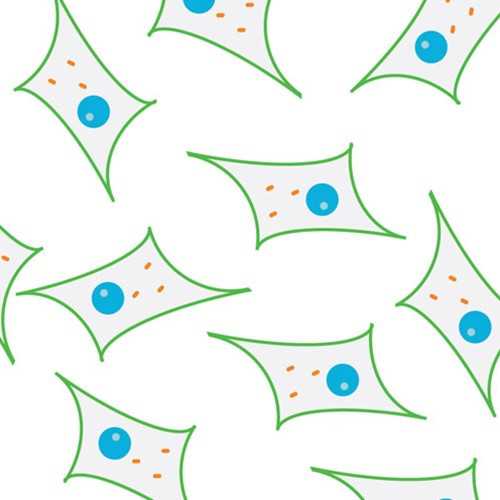4B6/3598/3442#2/4011/4014C1-2 Cell Line
This murine fibroblast cell line is a derivative of the 4B6/3598/3442#2/4011C1 Cell Line (Cat. ESA104) and maintains mtDNA at a reduced copy number. To generate this cell line the parental cells, which maintain mtDNA copy number at normal levels were transiently transfected with a plasmid pMA4014, which encodes mCherry and FLPo and flow sorted for transfected cells. As a result of FLPo-mediated excision of the MTS in front of the bacterial LigA gene, mitochondrial import of LigA in 4B6/3598/3442#2/4011/4014C1-2 cells is inefficient, and mtDNA is maintained at a reduced copy number. This cell line in conjunction with its companion isogenic cell line 4B6/3598/3442#2/4011C1 (Cat. ESA104) is useful for studying the effects of mtDNA copy number on cellular physiology.
From the laboratory of Mikhail F Alexeyev, PhD, University of South Alabama.
This murine fibroblast cell line is a derivative of the 4B6/3598/3442#2/4011C1 Cell Line (Cat. ESA104) and maintains mtDNA at a reduced copy number. To generate this cell line the parental cells, which maintain mtDNA copy number at normal levels were transiently transfected with a plasmid pMA4014, which encodes mCherry and FLPo and flow sorted for transfected cells. As a result of FLPo-mediated excision of the MTS in front of the bacterial LigA gene, mitochondrial import of LigA in 4B6/3598/3442#2/4011/4014C1-2 cells is inefficient, and mtDNA is maintained at a reduced copy number. This cell line in conjunction with its companion isogenic cell line 4B6/3598/3442#2/4011C1 (Cat. ESA104) is useful for studying the effects of mtDNA copy number on cellular physiology.
From the laboratory of Mikhail F Alexeyev, PhD, University of South Alabama.
| Product Type: | Cell Line |
| Cell Type: | Embryonic fibroblasts |
| Morphology: | Spindle-shaped at confluence |
| Organism: | Mouse |
| Source: | Mouse E13.5 Embryo |
| Biosafety Level: | BSL 1 |
| Growth Conditions: | DMEM/10% FBS. Periodic selection with 10 µg/ml blasticidin, 2 µg/ml puromycin, and 1 mg/ml G418 |
| Subculturing: | Split 1:4 to 1:8 every 3 days |
| Cryopreservation: | DMEM/10% FBS/10% DMSO |
| Comments: | Fast Growing |
| Storage: | LN2 |
| Shipped: | Dry Ice |
- Spadafora D, Kozhukhar N, Alexeyev MF. Presequence-Independent Mitochondrial Import of DNA Ligase Facilitates Establishment of Cell Lines with Reduced mtDNA Copy Number. PLoS One. 2016 Mar 31;11(3):e0152705.
If you publish research with this product, please let us know so we can cite your paper.


